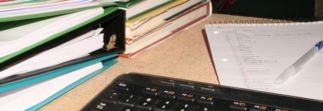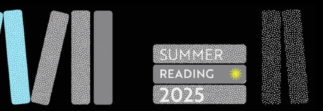Using a home computer in the early 1980s meant knowing at least some programming to get it off and running. When you turned on your Commodore 64—which you may well have done; it was the best-selling single model of computer ever produced—a nearly-blank blue screen emerged. “READY,” it told you. A blinking cursor awaited your commands.
Many of us used prefab programs to play games or do word processing, but the tinkerers among us wrote their own code, long and short, to explore what computers could do. Take this one-liner in BASIC language that Associate Professor of Digital Media Nick Montfort found in a magazine from the era: 10 PRINT CHR$(205.5+RND(1)); : GOTO 10. Run it on a Commodore 64 (or an emulator on your laptop today), and diagonal slashes fill the screen in a random way, building a pleasing maze that continues until interrupted.
Montfort posted 10 PRINT to an online Critical Code Studies conference in winter 2010. A lively discussion ensued among a dozen participants including MIT librarian Patsy Baudoin, who is liaison to the Media Lab and the Foreign Languages and Literatures department. Though the code is short and there’s not much known about its history, “it was obvious that there was plenty to say about it,” says Montfort. “However concise it was, it clearly connected computation to creativity, and to culture, in really intriguing ways.”
A few months after the conference, Montfort asked the 10 PRINT thread contributors to collaborate on a book exploring different aspects of culture—mazes in literature and religion, randomness and chance in games and art, the programming language BASIC, the Commodore 64 computer—through the lens of that one line of code.
The book, whose title is the code, was published in December by MIT Press. Besides Montfort and Baudoin, the authors include John Bell, Ian Bogost, Jeremy Douglass, Mark C. Marino, Michael Mateas, Casey Reas, Mark Sample and Noah Vawter. Though 10 PRINT is freely downloadable under a Creative Commons license, its first print run nearly sold out within a month. (This is another example of increased sales accompanying open access.) Royalties go to the Electronic Literature Organization, a nonprofit that promotes writing, reading, and teaching digital fiction and poetry.
Baudoin, the lone librarian of the group, has a PhD in comparative literature, which she says proved useful during the year-and-a-half collaboration. “I understood implicitly that exploring a concise line of computer code was like reading a short poem,” she says. “[As a graduate student] I wrote a 50-page paper on Catullus’s Odi et amo, a two-line Latin poem. In one sense, this line of code doesn’t appear to do a lot, but analyzed carefully, it speaks loudly.”
10 PRINT has a lot to say about a specific time. Though we can easily edit video, chat online, and play music on our laptops today, “when it comes to allowing people to directly access computation and to use that computing power for creative, expressive, and conceptual purposes, today’s computers, out of the box, are much worse” than those of 30 years ago, says Montfort. “I can type in and run the 10 PRINT program within 15 seconds of turning my Commodore 64 on. I can modify it and explore the program quite extensively within a minute. How long would it take you to produce any program like that after you started up your Windows 8 system?”
Montfort is quick to note that his interest in code like 10 PRINT is not nostalgia for a lost era; this, he says, trivializes important ideas in computer history. 10 PRINT itself is far from trivial, which is why Montfort, Baudoin and their coauthors found it a worthy book topic. “This type of program was written and run by millions in the 1980s on their way to a deeper understanding of computation,” he says.
Find 10 PRINT events under “Upcoming” at http://nickm.com.
See also: MIT News coverage of the book


